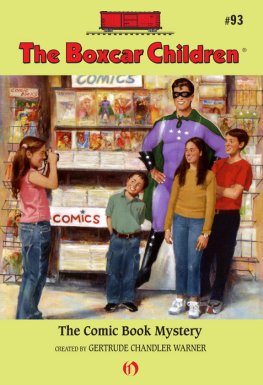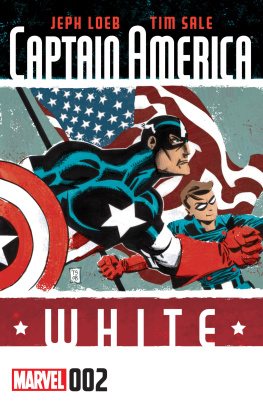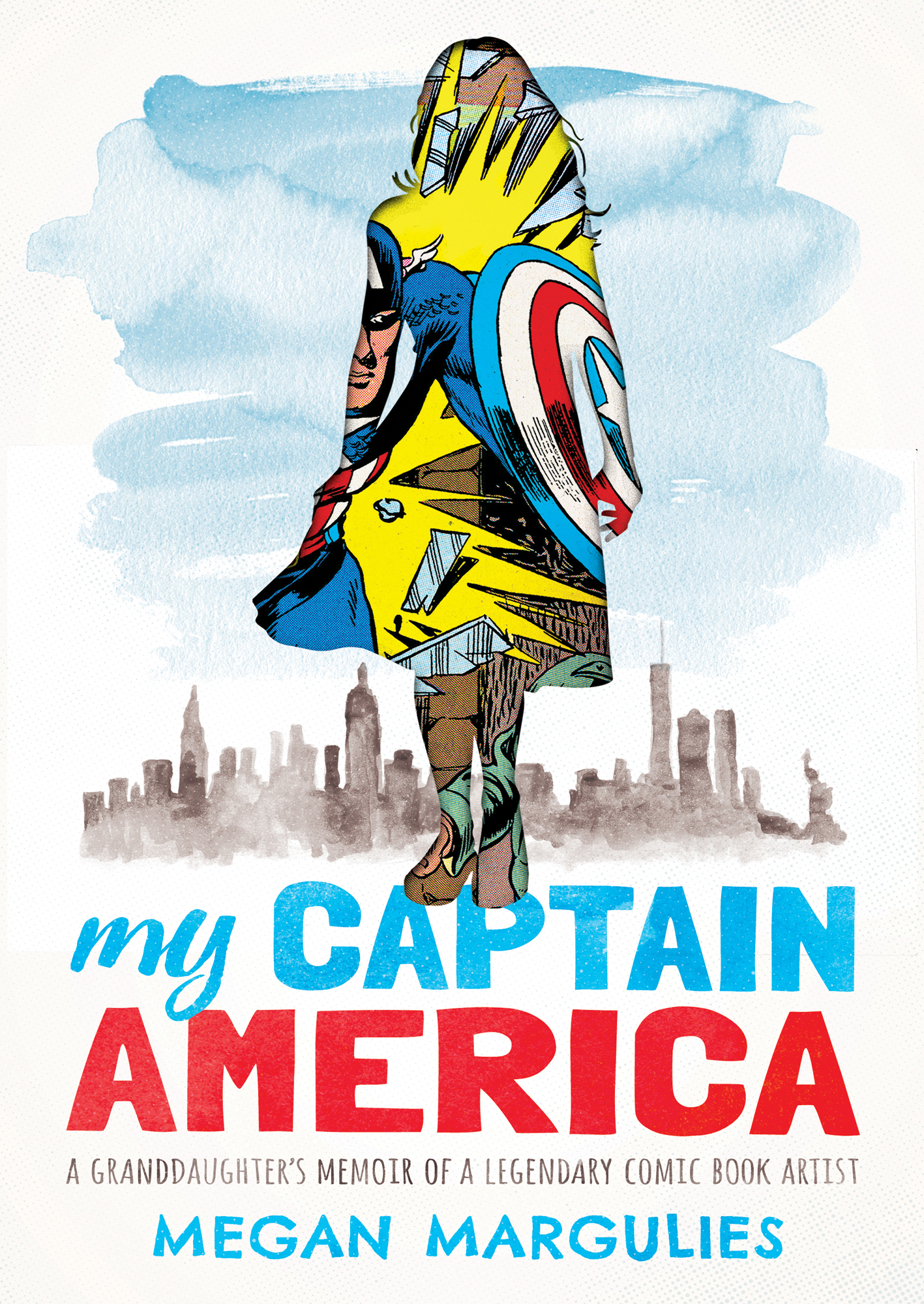Contents
Guide
M Y C APTAIN A MERICA
Pegasus Books, Ltd.
148 West 37th Street, 13th FL
New York, NY 10018
Copyright 2020 by Megan Margulies
First Pegasus Books hardcover edition August 2020
Interior design by Sabrina Plomitallo-Gonzlez, Pegasus Books
Jacket design by Faceout Studio, Jeff Miller
Cover art by Joe Simon and Shutterstock
Author photo by Diana Levine
All rights reserved. No part of this book may be reproduced in whole or in part without written permission from the publisher, except by reviewers who may quote brief excerpts in connection with a review in a newspaper, magazine, or electronic publication; nor may any part of this book be reproduced, stored in a retrieval system, or transmitted in any form or by any means electronic, mechanical, photocopying, recording, or other, without written permission from the publisher.
ISBN: 978-1-64313-465-9
Distributed by Simon & Schuster
To my girls, Lila and Edie.
May you always have the courage to make art of your own.
And, of course, this is for Daddy Joe.
The stories in this book were unearthed from my own memories, home videos, as well as from my grandfathers books, My Life in Comics and The Comic Book Makers. Fragments of this story were featured in essays in the Washington Post and Womans Day. There are a few names that have been changed to protect the privacy of individuals.
Prologue

He lived in midtown Manhattan, forty blocks south of my familys apartment. A smile and nod to the doorman, up the elevator, and down to the end of the popcorn-walled hallway brought you to apartment 6M. M for moron, he used to say.
As a child, I loved without questioning. I probably loved without knowing it. Since I was very young, my love blazed a bright path to-ward my grandfatheror, as I called him once I could talk, Daddy Joe. He created Captain America, the Fly, Fighting American, Sick magazine, and romance comics, among others. Most people remember him as a true comics legend. To me, Joe Simon was the man who loved to have a cigar every night, a fan blowing the smoke over a drawing table spattered with ink and paint and out his studio apartment window.
Even before my familys apartment became too much to bear, he was a calming force amid a city of millions. Out on the streets there were constant obstacles to maneuver aroundpeople, construction, cars, wailing sirensand places that were off-limits. Dont go too far, dont run down the subway steps without me, dont touch those crack vials, watch out for that man, dont step on that lady. And even inside the apartment I had parents to contend withdont eat that, dont leave your toys there, dont talk to the kids outside your window, dont forget to lock the door, stay out of my way.
In Daddy Joes apartment, I was on vacation from it all. His linen closet was stocked with the root beer I was forbidden from having at home; microwavable dinners were stacked in his freezer; and takeout menus for dozens of restaurants were scattered on his kitchen table. The view from his studio apartment was a partial downtown view, lights and dark windowsthe simple version of New York. When I was with him, I loved the city. I saw the magic of it.
For a better view, we went up to the roof of his building. Lets bring the camera, he suggested more than once.
The elevator climbed, skipping over the thirteenth floor, shaking enough to make me tense and look to Daddy Joe for reassurance. Once we were on the twenty-third floor and out of the elevator, there was a steep climb in the stairwell, the gray concrete steps echoing our stomps against the walls. With a hard shove, sometimes with my hip, the roof door flung open, getting caught in the wind and slamming against the side of the buildingdaylight almost knocking us off our feet.
Sometimes we separated immediately, Daddy Joe snapping photos of the skyline with his old Nikon, the photos to be used as inspiration for superheroes leaping over city buildings. I tried to make out figures in the windows across the way. Taller buildings blocked all of Central Park and uptown, where my familys apartment was.
Careful! he yelled in my direction as I gripped the metal railing and peered over the edge at the tiny cars and people below. He stood on the gravel, his eyes squinting behind his large-framed glasses, his long legs making him seem as tall as the surrounding buildings. Come over here and let me take a photo of you.
Other times we stood together, looking west toward the Hudson River, catching a glimpse of New Jersey. The city buzzing, honking below usthe wind whipping my hair and dancing around our two bodies. I like to think that in these moments we were both happypretending to fly over the city like a superhero and the girl he rescued.
ONE It All Began in New York 1913 and 1981

D addy Joe once told me that he came close to never being born.
My mother tried to get rid of me, he said with a laugh.
My great-grandmother Rose found out that she was pregnant only nine months after having my great-aunt Beatrice. Working as a button-maker, while my great-grandfather Harry worked as a tailor, Rose didnt believe they could afford another child. She begged her cousin Izzy, a pharmacist, to help with her predicament. He placed a pill in her palm and sent her on her way. Rose swallowed the aspirin, relieved to have her problem solved.
Daddy Joe was born on October 11, 1913.
He grew up in Rochester, New York. His father, Harry, came from Leeds, England, on the other side of the Atlantic. He had a lot of family in Rochester, one of them a cousin named Hymie. Hymie was tall and handsome, a ladys man. Harry wrote Hymie Simon on Daddy Joes birth certificate without Rose knowingshe couldnt read English, only her native Russian and Yiddish. But when she found out, she was furious. She wanted Daddy Joe to be named Joseph, after her brother. Even though she got her way, his birth certificate was never changed. He was always legallysecretlyHymie.
They called their apartment a flat. It was railroad style, moving from front to back. The front of the apartment served as Harrys tailor shop, with windows only in a few rooms. On Sundays, after Rose and Harry were done with the newspaper, they handed over the comic strips to Daddy Joe and his sister, Beatrice. The two of them laid out the pages on the floor of the apartments front room where, because it was used as Harrys shop, they enjoyed the modern luxury of electric lights.
Rochester was a city of manufacturers, including Eastman Kodak, the photography company, and Bausch + Lomb, the optical conglomerate. In an effort to contribute income to the family, a fourteen-year-old Daddy Joe sold newspapers on street corners, in front of the Kodak building, and in the Bausch + Lomb lobby for two cents each. Years later, he used his experience as a paperboy to create the Newsboy Legion for DC Comics, about a group of orphans living on the streets of Suicide Slum in New York City.
As a child, Daddy Joe knew only Rochester but saw many other places in the movies, including Broadway and the Big Apple. He dreamed of moving to New York City from a young age, but after high school, he stayed in Rochester, illustrating for the local newspaper and saving his money.













